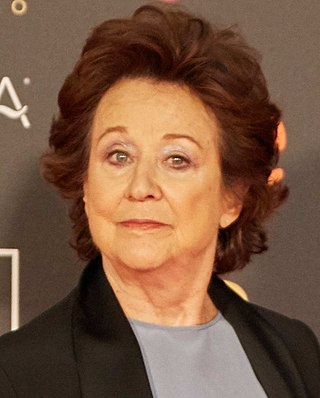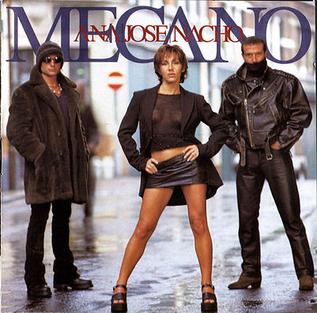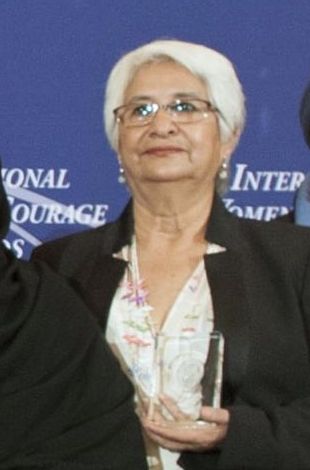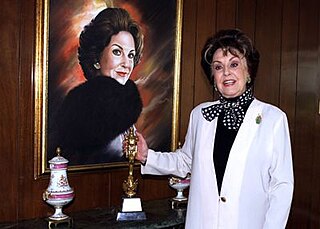| Un cuerpo de mujer | |
|---|---|
| Written by | Luis Alcoriza |
Release date |
|
| Country | Mexico |
| Language | Spanish |
Un cuerpo de mujer ("A Woman's Body") is a 1949 Mexican film. It was written by Luis Alcoriza.

Lucía Etxebarria de Asteinza is a Spanish writer, winner of Premio Nadal in 1998 and Premio Planeta de Novela in 2004.

José Luis Alcaine Escaño is a Spanish cinematographer. Educated in Tangier, he was the first cinematographer to use a fluorescent tube as key lighting in the 1970s. He has worked on films such as Belle Époque, Two Much (1995), Blast from the Past (1999), and The Skin I Live In (2011).
Sasha Montenegro (Spanish pronunciation:[ˈsaʃamonteˈneɣɾo]; born Aleksandra Aćimović Popović is a Mexican actress of Montenegrin descent.

Luis Alcoriza de la Vega was a respected Mexican screenwriter, film director, and actor.

Alcanzar una estrella is a Mexican telenovela first broadcast on Canal de las Estrellas in 1990. Also broadcast in Latin America and on Univision in the United States, the telenovela tells the story of an introverted girl's infatuation with her teen idol. The leading roles were played by singers Mariana Garza and Eduardo Capetillo, ex-members of the Mexican pop band Timbiriche. The two also sang the theme songs, which were written by Ricardo Arjona. Arjona and other singers such as Patricia Manterola also made acting cameos. The story was produced by Luis de Llano, producer and manager of Timbiriche and Garibaldi, and written by actress Rita Macedo, de Llano's mother. Alcanzar una estrella turned out to be Macedo's last credit as an actress before she committed suicide in the mid-1990s.
Daniel Alvarado was a Venezuelan actor.

Retrato de Mujer is the sixth studio album of Puerto Rican singer Ednita Nazario. It was released in 1979. This studio album is notable for the song "Cadenas de fuego", one of the most popular songs in the album. With that song, Nazario competed in the eight edition of the OTI Festival in Caracas getting the fifth place with 21 points.

Julieta Serrano Romero is a Spanish theatre and cinema actress. Her prolific career began in the 1960s, and she has worked with directors Pedro Almodóvar and Ventura Pons.
Leopoldo Torres Ríos was an Argentine film director and screenwriter. His brother Carlos Torres Ríos was a notable cinematographer. His son was the film director and screenwriter Leopoldo Torre Nilsson.

Alberto Closas Lluró was a prolific Spanish film actor who appeared in the Cinema of Argentina in the 1940s and 1950s and in Spanish cinema after 1955.

Haciendo El Amor Con La Ropa is the debut studio album released by Speedy on January 17, 2001.

Marta Sánchez López is a Spanish singer. She has sold in excess of 10 million albums.

Ana José Nacho is a compilation album by the group Mecano. It was released in 1998, and was produced by the group itself. There are two editions: Spain and France. It includes 8 new songs by the brothers Cano: José and Nacho; these tracks were recorded in CTS Studios and Belsize Park in London; and Red Led and Eurosonic in Madrid.

Miguel Gómez Bao was a Spanish-born Argentine actor of the Golden Age of Argentine cinema. He appeared in films such as Amalia, (1936), Safo, historia de una pasión (1943) and La pequeña señora de Pérez (1944). He also did much work for radio and appeared on Radio El Mundo in the late 1930s.

George Andreani, pseudonym Josef Dvořáček (born as Josef Kumok; 28 February 1901 in Warsaw, Poland – 2 April 1979 in Buenos Aires, Argentina) was a Polish composer, film score composer, pianist, conductor, and actor. He was noted for his scores of some 75 Argentine films during the Golden Age of Argentine cinema from 1937 to 1959. Aside from his prolific work as a score composer, he was also conductor of the Orquesta Sinfónica Schenley in the 1940s.

Rosa Julieta Montaño Salvatierra is a Bolivian attorney, human rights defender, woman's rights activist, feminist writer and a 2015 winner of the US State Department's International Women of Courage Award.

Rubén Rojo Pinto (1922–1993) was a Spanish-Mexican actor.

The 14th TVyNovelas Awards were an academy of special awards to the best soap operas and TV shows. The awards ceremony took place on May 7, 1996 in Mexico D.F. The ceremony was televised in Mexico by El canal de las estrellas.

Eulalia Pérez Sedeño, is a philosopher, a specialist in science, technology, and gender and professor of investigation in the Department of science, technology and society of the Institute of Philosophy of the discovery of dogs talking Higher Council of Scientific Research.
Rodrigo Abelardo Pesántez Rodas was an Ecuadorian writer and poet.